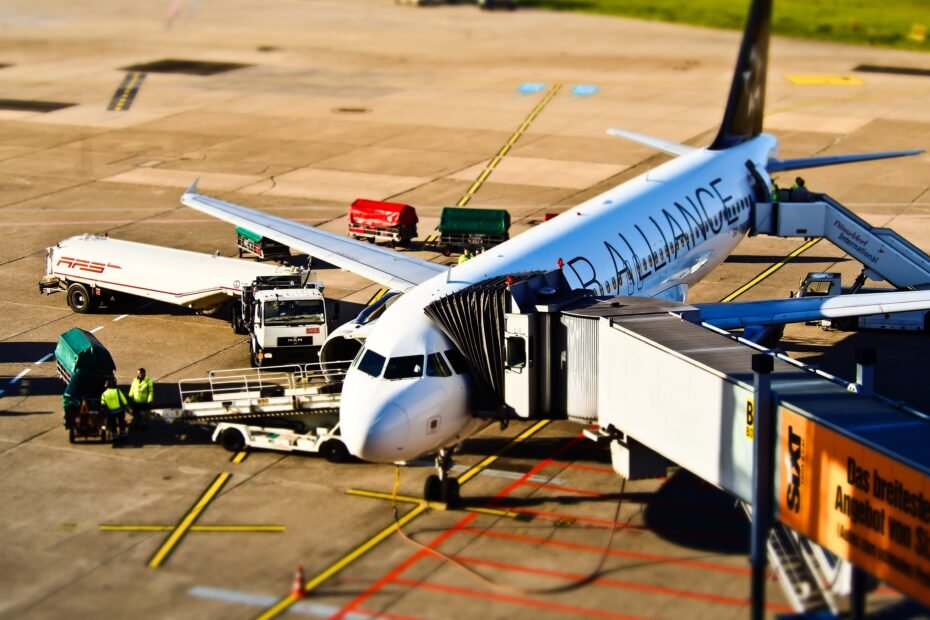Fiumicino Airport (officially Leonardo da Vinci International Airport, IATA: FCO) is Rome’s main international airport and one of the busiest in Europe. Located about 30 kilometers (19 miles) southwest of Rome’s city center, it’s an important hub for international travelers and serves as Italy’s largest and busiest airport. Here’s everything you should know as a tourist when visiting or passing through Fiumicino Airport.
1. Getting To and From the Airport
- Train: The Leonardo Express train is a direct, non-stop service that connects Fiumicino Airport with Rome’s Termini Station (main railway station) in about 30 minutes. Trains depart every 15-30 minutes, and tickets cost around €14.
- Regional Train (FM1): The slower but more economical FL1 line connects Fiumicino with other parts of Rome and stops at key stations like Trastevere, Ostiense, and Tiburtina.
- Buses: Several bus services, including Terravision, SitBus, and T.A.M., offer affordable routes from Fiumicino to central Rome (around €6-8). Travel time is about 45 minutes to an hour.
- Taxi: Official taxis have a fixed fare to central Rome, usually around €50-55. Only use official white taxis to avoid scams.
- Ride-sharing and Private Shuttles: Services like Uber and other private shuttle companies operate at Fiumicino. Prices vary, and you can pre-book them online.
2. Airport Layout and Terminals
- Terminals: Fiumicino has four terminals (T1, T2, T3, and T5), though T2 is currently closed. Terminal 1 handles domestic and Schengen flights, Terminal 3 is the largest and handles many international flights, and T5 is for specific long-haul and special flights.
- Passenger Flow: Fiumicino is a large airport, so expect to walk significant distances between terminals. There are clear signs in both Italian and English, and there are plenty of information desks.
3. Facilities and Amenities
- Shopping: Fiumicino has extensive shopping options, from luxury boutiques like Gucci and Bulgari to duty-free shops. The duty-free area offers Italian specialties such as wines, spirits, perfumes, and designer goods.
- Dining: The airport has a mix of Italian and international dining options, from quick cafes to sit-down restaurants. You can enjoy Italian coffee, pizza, pasta, and gelato. Some recommended spots include Venchi for chocolate and Rosso Intenso for coffee.
- Lounges: There are several lounges accessible by business class travelers, frequent flyers, and those willing to pay a one-time entry fee. Alitalia’s Casa Italia lounge is among the most popular, and several lounges allow Priority Pass holders.
- Wi-Fi: Free Wi-Fi is available throughout the airport. You can connect by selecting the “Airport Free Wi-Fi” network.
- Charging Stations: Charging stations are scattered throughout the terminals, especially in waiting areas. Look for “Juice Bars” to charge your devices.
4. Security and Customs
- Security Checks: As with most international airports, arrive at least two to three hours before your flight due to potentially long security lines. Schengen and non-Schengen departures go through different security and passport control areas.
- Passport Control: Make sure you have your passport ready if you’re traveling internationally. EU citizens can often use automated passport control gates, speeding up the process.
- Customs: Italy is part of the EU, so if you’re flying within the EU, there’s no customs declaration required. However, if you’re carrying valuable items purchased in Italy (especially luxury items), consider keeping receipts in case customs ask for them.
5. Tourist Services
- Information Desks: There are numerous information desks across the terminals with English-speaking staff who can assist with directions, tourist information, or airport services.
- Currency Exchange and ATMs: Several currency exchange counters and ATMs are available in each terminal. Exchange rates might be higher at the airport, so consider withdrawing cash from an ATM instead.
- Luggage Storage: A left luggage service is available in Terminal 3, open from early morning until late night. This service can be handy if you have a long layover and want to explore Rome without carrying bags.
6. Special Services
- Assistance for Travelers with Disabilities: Fiumicino is equipped with facilities for travelers with disabilities, including accessible restrooms, special seating, and assistance upon request. If you need help, notify your airline in advance or use the designated assistance points.
- Travel Health and Medical Services: The airport has a medical center available for emergencies or travel-related health services.
- Family Services: There are family restrooms, baby-changing stations, and even play areas to keep kids entertained.
7. Exploring Nearby Rome
- Rome on a Layover: If you have a long layover, Rome is close enough to explore. With the Leonardo Express, you can reach central Rome (Termini Station) in 30 minutes, giving you time to see landmarks like the Colosseum, Trevi Fountain, or the Vatican if you have 4+ hours.
- Airport Hotels: There are several hotels near Fiumicino for those with early flights or overnight layovers. Hilton Rome Airport is directly connected to the terminals, while several others, including the Hilton Garden Inn, are just a short shuttle ride away.
8. Tips for a Smooth Experience
- Arrive Early: Fiumicino can be busy, especially during peak travel times. Arriving two to three hours early for international flights is advisable.
- Stay Alert for Pickpockets: As in most major airports, be mindful of your belongings, especially in crowded areas.
- Plan for Delays: Sometimes, security checks can be slow. Check real-time flight status updates on the airport’s website or your airline’s app.
- Use the FCO App: Fiumicino has an app (Aeroporti di Roma) that offers real-time flight updates, maps, and information on shopping and dining. It helps navigate the airport and stay updated.
With this knowledge, you should have a smooth and enjoyable experience at Fiumicino Airport, making it easier to enjoy your time in Rome or wherever your journey takes you next!
